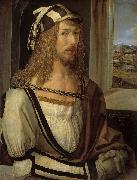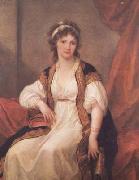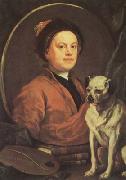Wholesale Oil Painting Reproductions No Minimum and Door to Door! |
|||||||||||
|
|
|||||||||||

|
|||||||||||
|
|
|
||||||||
All Albrecht Durer Oil Paintings |
||||||||
|
|
||||||||
|
|
||||||||
|
Artist Introduction: b.May 21, 1471, Imperial Free City of Nernberg [Germany]
d.April 6, 1528, Nernberg
Albrecht Durer (May 21, 1471 ?C April 6, 1528) was a German painter, printmaker and theorist from Nuremberg. His still-famous works include the Apocalypse woodcuts, Knight, Death, and the Devil (1513), Saint Jerome in his Study (1514) and Melencolia I (1514), which has been the subject of extensive analysis and interpretation. His watercolours mark him as one of the first European landscape artists, while his ambitious woodcuts revolutionized the potential of that medium. D??rer introduction of classical motifs into Northern art, through his knowledge of Italian artists and German humanists, have secured his reputation as one of the most important figures of the Northern Renaissance. This is reinforced by his theoretical treatise which involve principles of mathematics, perspective and ideal proportions.
His prints established his reputation across Europe when he was still in his twenties, and he has been conventionally regarded as the greatest artist of the Renaissance in Northern Europe ever since. |
||||||||
|
|
||||||||
|
Self-portrait (mk08) Painting ID:: 21354 |
1498
Oil on wood 52x41cm
Madrid,Museo del Prado |
|||||||
Height Width |
INS/CM Quality |
|||||||
|
X |
| |||||||
|
|
||||||||
All LA TOUR, Maurice Quentin de Oil Paintings |
||||||||
|
|
||||||||
|
|
||||||||
|
Artist Introduction: French Rococo Era Painter, 1704-1788
French pastellist. He was one of the greatest pastellists of the 18th century, an equal of Jean-Simeon Chardin and Jean-Baptiste Perronneau. Unlike them, however, he painted no works in oils. Reacting against the stately portraits of preceding generations and against the mythological portraits of many of his contemporaries, La Tour returned to a more realistic and sober style of work. The fundamental quality of his art lies in his ability to suggest the temperament and psychology of his subjects by means of their facial expression, and thereby to translate their fugitive emotions on to paper: 'I penetrate into the depths of my subjects without their knowing it, and capture them whole', as he himself put it. His considerable success led to commissions from the royal family, the court, the rich bourgeoisie and from literary, artistic and theatrical circles. |
||||||||
|
|
||||||||
|
|
Self-Portrait (mk08) Painting ID:: 21901 |
1751
Pastel
64.5x53cm
Amiens,Musee |
||||||
Height Width |
INS/CM Quality |
|||||||
|
X |
| |||||||
|
|
||||||||
All KAUFFMANN, Angelica Oil Paintings |
||||||||
|
|
||||||||
|
|
||||||||
|
Artist Introduction: Swiss Neoclassical Painter, 1741-1807
Swiss-born Italian painter. She began studying art in Italy as a child, showing great precocity, and in 1766 her friend Joshua Reynolds took her to London. There she became known for her decorative work with architects such as Robert Adam. Her pastoral compositions incorporate delicate and graceful depictions of gods and goddesses; though her paintings are Rococo in tone and approach, her figures are Neoclassical (see Classicism and Neoclassicism). Her portraits of female sitters are among her finest works. |
||||||||
|
|
||||||||
|
|
Self-portrait (mk08) Painting ID:: 21928 |
1780
Oil on canvas
130x102cm
Frankfurt am Main,
Goethe-Museum |
||||||
Height Width |
INS/CM Quality |
|||||||
|
X |
| |||||||
|
|
||||||||
All HOGARTH, William Oil Paintings |
||||||||
|
|
||||||||
|
|
||||||||
|
Artist Introduction: British Painter and Printmaker, 1697-1764
English painter and engraver. He played a crucial part in establishing an English school of painting, both through the quality of his painting and through campaigns to improve the status of the artist in England. He also demonstrated that artists could become independent of wealthy patrons by publishing engravings after their own paintings. |
||||||||
|
|
||||||||
|
|
Self-portrait (mk08) Painting ID:: 21931 |
1745
Oil on canvas
90.2x69.8cm
London,Tate Gallery |
||||||
Height Width |
INS/CM Quality |
|||||||
|
X |
| |||||||
|
|
||||||||
|
Prev Next
|
||||||||
|
|
||||||||
|
Related Paintings to HOGARTH, William :. |
||||||||
|
|
||||||||
|
CONTACT US |




